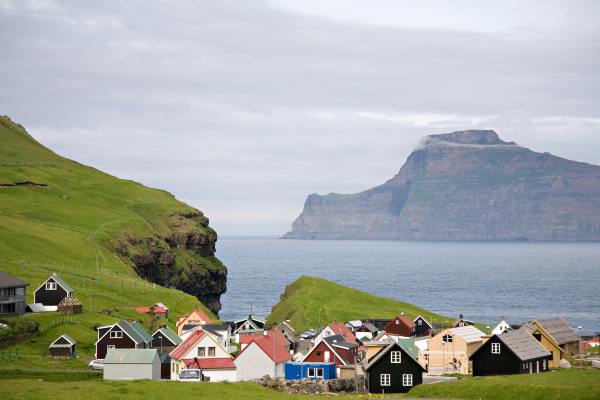Faroe Islands
DenmarkThe Faroe Islands, an archipelago of 18 volcanic islands, lie in the North Atlantic Ocean between Iceland and Norway. Known for their rugged beauty, the islands are characterized by dramatic cliffs, rolling green hills, and quaint villages with colorful turf-roofed houses. This remote destination offers an incredible escape into nature, where the landscape is shaped by ancient volcanic activity and carved by glaciers.
Travelers to the Faroe Islands can explore a wealth of outdoor activities, from hiking scenic coastal trails and birdwatching on towering sea cliffs to fishing in pristine waters. The islands are also home to unique wildlife, including puffins, gannets, and seals, making it a haven for nature lovers. For those interested in history and culture, the islands have a rich Viking heritage, which can be explored through ancient settlements, traditional Faroese architecture, and local museums.
The capital, Tórshavn, is a charming mix of old and new, offering cultural experiences, local cuisine, and a welcoming atmosphere. Beyond the towns, visitors will find hidden gems like Sørvágsvatn, the "floating lake," and the picturesque village of Gjógv. Whether you're seeking adventure, tranquility, or a glimpse into a unique way of life, the Faroe Islands provide a coolcation experience like no other.
How to Get There
The Faroe Islands are accessible by air and sea, making it a remote yet reachable destination.
By Air: The primary point of entry is Vágar Airport (FAE), located on Vágar Island, which has regular flights from cities like Copenhagen, Reykjavík, and Edinburgh. Atlantic Airways, the national airline, and Scandinavian Airlines (SAS) operate flights to the islands.
By Ferry: If you prefer traveling by sea, the Smyril Line operates a ferry service between Denmark, Iceland, and the Faroe Islands. The ferry docks in Tórshavn, providing a scenic and leisurely way to arrive.
Once on the islands, getting around is easy with a network of well-maintained roads, bridges, and tunnels connecting the main islands. Rental cars are widely available and recommended for exploring remote locations. Public buses and ferries also offer reliable options for traveling between islands.
